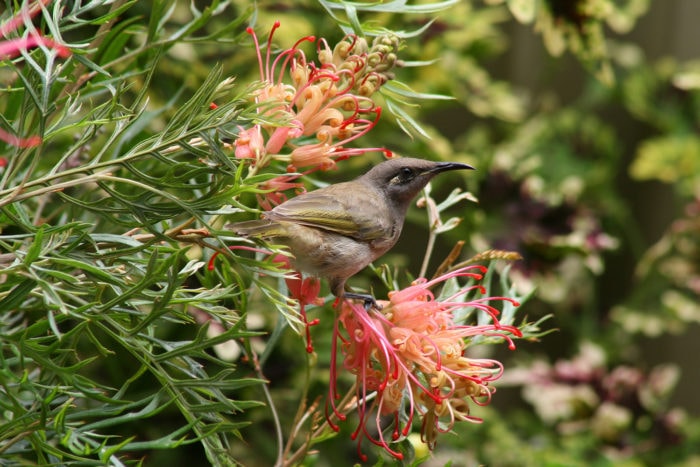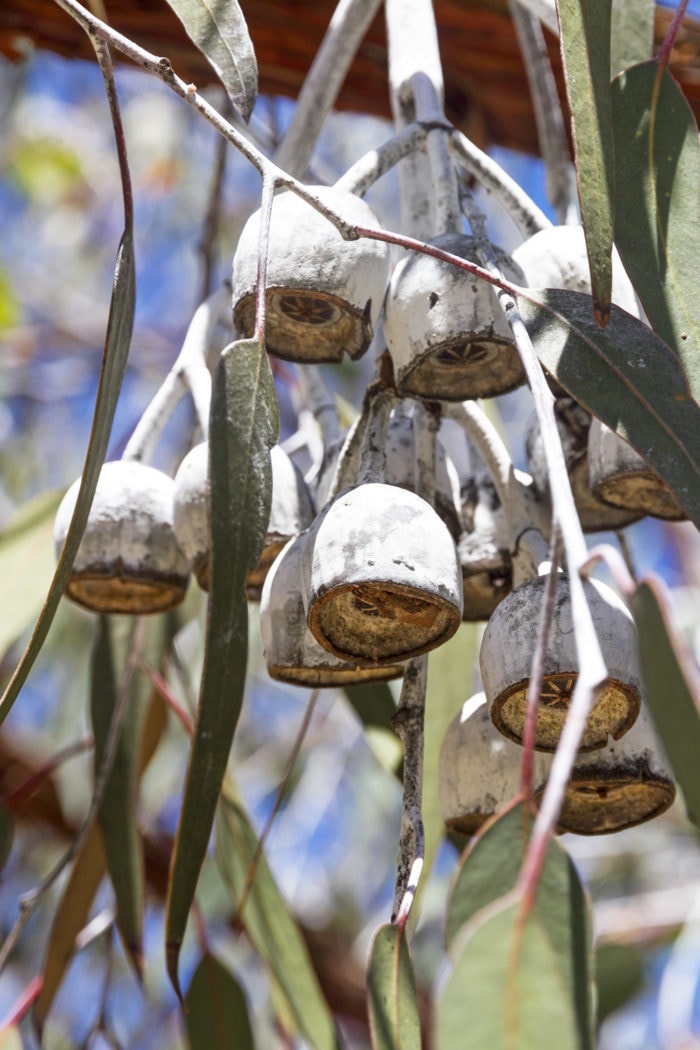‘Lawn you can eat’: Native alternatives to garden staples

NATIVE AUSTRALIAN plants are currently experiencing a revival. Both nurseries and florists have spotted the trend and are offering us more to choose from. But what to choose?
Garden designer Karen Sutherland of Edible Eden Design specialises in both ornamental and edible native plants perfect for your garden.
Here, we chat to Karen about the replacements for hedges, grass, roses, feature trees and herbs.
Native hedges
Hedges aren’t just ornamental but also can be used to create privacy. Karen recommends three native alternatives to the commonly used Japanese box (Buxus microphylla) and Sweet viburnum (Viburnum odoratissimum).
The first is Westringia, an Aussie shrub that grows successfully in all states. One of the most popular species being the the coastal rosemary (Westringia fruticosa), which sprouts dainty, white flowers.
For a taller hedge, Karen says coastal correa (Correa alba) is one of the best options, recognisable for its blue-grey leaves.
The plant with the most hedge potential, according to Karen, however, is the lilly pilly. “They can be really tall hedges, like the Waterhousia floribunda, a rainforest tree, and there are also dwarf lilly pilly species used quite commonly throughout Australia,” she says.
No more roses
Large grevilleas are the obvious alternative for roses, says Karen. Grevillea ‘Coconut Ice’, ‘Superb’, ‘Robin Gordon’, ‘Ned Kelly’ – there are plenty of cultivars to choose from.
“They’re all large flowers, they don’t have prickly leaves, they flower all year round, they love warmer weather but they grow in Melbourne as well. They’re just fantastic.”
Importantly, grevilleas attract nectar-eating birds, such as wattle birds, as well as native insects and bees.
According to Karen the plants also make great cut flowers, which can be soaked in water to make a delicious drink.

Grevillea coconut ice. (Image credit: Jaytee/Shutterstock)
Lawn you can eat
The native seed is a lot more expensive than the non-native seed, as it’s more widely produced. It’s better suited to smaller areas. “You can plant them out as small plants or seed. Non-native grass seed is much cheaper, because the harvesting of native seed is uncommon.”
Weeping grass is one of the best options for a native grass lawn, according to Karen, because “it’s a hardy, drought-tolerant grass,” but she says, it can’t be cut too low with a lawn mower because it will die.
“These are totally water-saving plants, requiring way less water than traditional turf. Also, you don’t need to fertilise them and you don’t need to spend so much time and money on mowing.”
Native violets (Viola banksii) are the most unexpected lawn alternatives. “It’s a lawn you can sit on and eat,” says Karen – who often uses the flowers as garnish or in salads “and they’re remarkably drought tolerant. I don’t water [them] very often.”
Dichondra and is another alternative lawn option, which fits perfectly around stone tiles and paths, and like the native violets, needs very little water.
A family tree
Many Australians have that one tree in their backyard they have a lot of affection for. As far as feature trees go, Karen recommends Silver Princess eucalypt (Eucalyptus caesia). “It has silveryness that if you touch it you get silver on your hands. It is absolutely glorious, people just fall in love with them.” They also attract birds.
The silver princess and fuschia gum (Eucalyptus forrestiana), another eucalypt Karen recommends, only grows 3–5 metres tall, and it takes a long time for it to get to five metres. “People think gum trees and eucalypts are all really large but they’re not. There’s a good range of small eucalypts to choose from.”
For a backyard with more space, Karen recommends native frangipani (Hymenosporum flavum), which she says, loves a hot climate, as long as it has adequate water, and has one of best-smelling flowers around spring time.

Edible treats
Instead of exotic fruits and herbs, Karen says there are plenty of native alternatives. “People don’t realise there’s more than 40 different varieties of finger limes, which originated in rainforests. They’re grown for this citrusy caviar that just bursts in your mouth.”
Avoid growing lemongrass, Karen advises, and instead opt for lemon myrtle (Backhousia citriodora), which is grown more easily in colder climates. “It’s becoming more available, which shows the growers directly respond to what they can sell.”
Replacing European mint with native mint is also an easy swap. “You can use it to make a tea, put it in different salsas, salads, place sprigs in cocktails and jugs of water. Crushing and smelling them is also great to clear the nose.”




